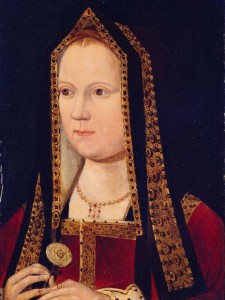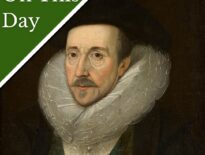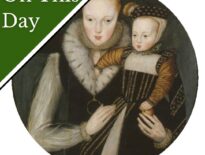 On this day in Tudor history, 23rd February 1503, Elizabeth of York, Queen Consort of Henry VII and mother of Henry VIII, was laid to rest at Westminster Abbey.
On this day in Tudor history, 23rd February 1503, Elizabeth of York, Queen Consort of Henry VII and mother of Henry VIII, was laid to rest at Westminster Abbey.
Elizabeth had died on her 37th birthday, on 11th February, at the Tower of London, nine days after giving birth to a daughter, Katherine, who also died.
In "The Last Medieval Queens: English Queenship 1445-1503", J L Laynesmith writes of how at least £3,000 was spent on Elizabeth’s funeral, compared to the £600 spent on that of Arthur, Prince of Wales, the previous year, and that “the whole process was rich with references to the queen’s coronation”.
Following ten days of lying in state at the Tower, the queen’s remains were conveyed to Westminster Abbey using the very same route that was used in coronation ceremonies. Her coffin, topped with an effigy of Elizabeth wearing her robes of estate and crown, and holding her sceptre, was placed on cushions of black velvet and blue cloth of gold in a carriage. The carriage was escorted by knights bearing banners displaying the royal arms and images of saints and the parents of the king and queen, and the procession was led by 200 poor people bearing torches, followed by members of the royal household, clerics, and the mayor of London. Behind the carriage bearing Elizabeth’s coffin, were noblewomen, other officers of the City of London and more members of the royal household.
When the procession reached Westminster Abbey, the coffin was placed on a hearse decorated with black cloth of gold emblazoned with the queen’s motto, humble and reverent, and royal emblems. The coffin then lay in state overnight, with watchers and torchbearers, while a supper was held in Elizabeth’s chamber, presided over by her sister, Katherine of York.
On 23rd February. Elizabeth’s funeral took place, with her sister, Katherine, acting as chief mourner. 1,000 candles burnt around her coffin with 273 tapers burning above black cloths that hung from the roof of the abbey. Two masses and then a requiem mass were said before the ladies departed and the burial took place. The Bishop of London blessed the grave, the effigy was removed from the coffin and then the coffin was lowered into the grave. The queen’s officers then broke their staffs of office and threw them into the grave, symbolising the end of their service to Elizabeth.
The grave in which Elizabeth was buried in 1503 was in a side chapel. She was later moved to her present resting place in a vault in Henry VII’s Lady Chapel. Her husband joined her after his death in 1509. Their splendid tomb features gilt bronze effigies of the couple, depicting them in prayer. Here is a description of their tomb from the Westminster Abbey website:
“The black marble tomb base is adorned with six medallions in copper gilt representing the Virgin Mary and Henry's patron saints (Michael, George, Anthony, Christopher, Anne, Edward the Confessor, Vincent, Barbara, Mary Magdalene, John the Baptist and John the Evangelist). At either end are coats of arms supported by cherubs. The gilt bronze recumbent effigies can be seen through the fine grille which surrounds the monument. Seated angels balance on the carved frieze at each corner of the tomb, supporting coats of arms They once held pennants in their hands.”
I’ve been lucky enough to see it and it really is beautiful.
Elizabeth’s tomb inscription reads:
“Here lies Queen Elizabeth, daughter of the former King Edward IV, sister of the formerly appointed King Edward V, once the wife of King Henry VII, and the renowned mother of Henry VIII. She met her day of death in the Tower of London on the 11th day of February in the year of Our Lord 1502, having fulfilled the age of 37 years.”
It dates her death to 1502 because Elizabeth died before Lady Day, 25th March, which was when the new calendar year began in those times.
The effigy used in the procession and her funeral still exists and is in the collection of Westminster Abbey, along with that of her husband.



Leave a Reply